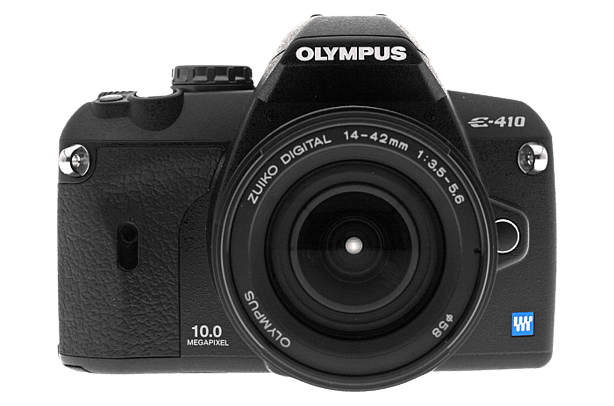Olympus E410 Specs and Scores

The Olympus E410 achieves a score of 35/100 in our evaluation. This DSLR camera, announced on March 5th, 2007, entered the market at a launch price of $480. With dimensions of 130 x 91 x 53mm and weighing 435g (0.96lbs), this camera has been around for quite some time.
When comparing the E410 to today’s market, its specifications may not stand up against more advanced models. However, this camera still offers a decent option for those seeking a budget-friendly DSLR. The Olympus E410’s score reflects its performance in relation to other cameras available in the market.
Olympus E410 Overview and Optics
The Olympus E410 receives a score of 34/100 for its optics. With 10 megapixels, a shooting speed of 3 fps, and an NMOS sensor, this camera offers basic features for photography enthusiasts. Its TruePic III processor and DXOMARK score of 51 for the sensor demonstrate the camera’s modest performance capabilities.
The E410 utilizes a Micro Four Thirds sensor size, which is smaller than the more common APS-C sensors found in many modern cameras. Its lens mount is also Micro 4/3, limiting the available lens options. The camera lacks image stabilization, which is a significant disadvantage for those looking to capture sharp images in various conditions.
The camera’s aspect ratio is 4:3, which is standard for this type of device. However, when compared to today’s market, the Olympus E410’s optics specifications fall short of the competition. This camera may be suitable for beginners or those on a tight budget, but advanced users will likely find its performance lacking.
Olympus E410 Video Performance
The Olympus E410 lacks video capabilities. This camera only captures still images, not videos.
Olympus E410 Features and Benefits
The Olympus E410 scores 30/100 in the features category, indicating that it lacks some of the desirable modern specifications. The camera has a 2.5-inch screen with a resolution of 215,000 dots, which is relatively low compared to current standards. It does not have a touchscreen, flip screen, GPS, Wi-Fi, or Bluetooth capabilities.
Comparing the Olympus E410 to contemporary cameras, it is evident that it falls short in offering the latest technological advancements. Most modern cameras come equipped with touchscreens, higher screen resolutions, and convenient features such as GPS, Wi-Fi, and Bluetooth for seamless connectivity and sharing. The absence of these features makes the Olympus E410 less appealing to current users who expect and rely on such specifications.
The Olympus E410, while a decent camera for its time, struggles to compete in today’s market due to its limited features. Although it may still capture quality images, it lacks the convenience and versatility that contemporary photographers have come to expect from their cameras.
Olympus E410 Storage and Battery
The Olympus E410 receives a storage and battery score of 60/100. This camera offers two memory card slots, accepting Compact Flash (Type I or II) and xD Picture Cards. In today’s market, these memory card types may not be as popular as SD cards, but they still provide sufficient storage options for users.
As for the battery, the E410 relies on the BLS-1 battery type, providing a decent battery life of 500 shots per charge. However, this camera does not support USB charging, which is a feature commonly found in many modern cameras.
Taking these specifications into account, the Olympus E410’s storage and battery capabilities are adequate but may not meet the expectations of users accustomed to more advanced options available in the market.
